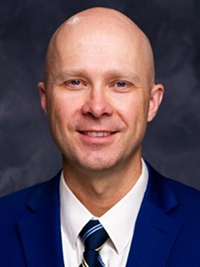

The diversity of patients treated at Loma Linda University Health (LLUH) is unlike anywhere else. On the one hand, there are the inhabitants of the only blue zone in the United States who enjoy a significantly longer, healthier lifespan. On the other hand, LLUH serves San Bernardino County, the largest county by square miles in the U.S., with some of the most significant health disparities and poverty rates in California. Healthcare outcomes are drastically different in these disparate populations--worse across multiple chronic illnesses in patients with limited access to care and negative social determinants of health.
When it comes to oral cancer, these differences are far more profound, as oral cancer care exists in a chasm between medicine and dentistry. Patients with major health disparities do not have access to routine dental visits and subsequently suffer from delays in diagnosis,1 which can cost them their lives. Delays in diagnosis and treatment are especially prevalent in young patients who do not have traditional risk factors of tobacco or alcohol use and would not suspect cancer to begin with. While oral cancer already has a woefully high 5-year mortality rate of 40%2 with 180,000 yearly deaths worldwide,2 mortality is far worse in patients with racial and socioeconomic disparities.3 Furthermore, those patients who actually survive their cancer end up facing orofacial disfigurement4 and impaired function when large portions of their jaw, tongue, or parts of their mouth are removed. Tooth loss from cancer treatment—either due to removal during cancer surgery or from decay after radiation—impairs eating and speaking, leading to poor quality of life and depression. Even so, only about 2.3% of patients5 actually ever have these teeth replaced due to the high out of pocket cost of dental rehabilitation, which is typically not fully covered by neither medical nor dental insurance.
Particularly in the Inland Empire, a large proportion of oral cancer patients find cancer care with dental rehabilitation highly cost prohibitive. Doubtlessly, equitable oral cancer care can only happen with health policy changes to provide insurance coverage for dental rehabilitation. For this crucial change to happen, a mindset shift must occur where dental rehabilitation should be considered as functional, and not cosmetic, in oral cancer patients. On a local level, surgeons can bring about this change by developing pathways to offer more comprehensive care for oral cancer patients. At Loma Linda University Health, we have developed a workflow to perform cancer removal and jaw reconstruction with microvascular free flaps, dental implant and dental prosthesis placement. This surgical technique, named “jaw in a day,” was developed over one decade ago6 but has now been adapted to oral cancer reconstruction. A cancer care team that agrees on prioritizing function and quality of life for oral cancer patients—especially in patients with significant health disparities—is key. A conscientious effort to make oral rehabilitation affordable contributes to excellence in oral cancer care. This concerted, multi-disciplinary approach is only the first step to improving oral cancer outcomes for all patients.
Author Bios:

Chi T. Viet, DDS, MD, PhD, FACS
Dr. Chi Viet is a surgeon scientist focused on head and neck cancer management. She serves as an Associate Professor of Oral Maxillofacial Surgery at Loma Linda University. Her extensive research experience and interests include head and neck carcinogenesis, neurobiological basis of symptoms faced by head and neck cancer patients, and epigenetic biomarkers of head and neck cancer. She enjoys gardening, cooking, and traveling with her husband and daughter.

Paul Walker, MD, FACS
Dr. Paul Walker is Associate Professor of Otolaryngology Head and Neck surgery at Loma Linda University. He is a fellow of the American Head and Neck Society and Fellow of the American College of Surgeons. He also serves as assistant residency program director and has seen the residency program expand from 12 residents to 20 residents. Dr. Walker’s clinical interest lies in head and neck cancer and reconstruction of the most complex patients. He enjoys spending time with his wife and 3 boys, cycling, competing in half ironman triathlons, camping and hiking
References:
1. Farquhar DR, Divaris K, Mazul AL, Weissler MC, Zevallos JP, Olshan AF. Poor oral health affects survival in head and neck cancer. Oral Oncol. Oct 2017;73:111-117. doi:10.1016/j.oraloncology.2017.08.009
2. Yoon AJ, Wang S, Kutler DI, Carvajal RD, Philipone E, Wang T, Peters SM, LaRoche D, Hernandez BY, McDowell BD, Stewart CR, Momen-Heravi F, Santella RM. MicroRNA-based risk scoring system to identify early-stage oral squamous cell carcinoma patients at high-risk for cancer-specific mortality. Head Neck. Aug 2020;42(8):1699-1712. doi:10.1002/hed.26089
3. Yu AJ, Choi JS, Swanson MS, Kokot NC, Brown TN, Yan G, Sinha UK. Association of Race/Ethnicity, Stage, and Survival in Oral Cavity Squamous Cell Carcinoma: A SEER Study. OTO Open. Oct-Dec 2019;3(4):2473974X19891126. doi:10.1177/2473974X19891126
4. Dhanuthai K, Rojanawatsirivej S, Thosaporn W, Kintarak S, Subarnbhesaj A, Darling M, Kryshtalskyj E, Chiang CP, Shin HI, Choi SY, Lee SS, Aminishakib P. Oral cancer: A multicenter study. Med Oral Patol Oral Cir Bucal. Jan 1 2018;23(1):e23-e29. doi:10.4317/medoral.21999
5. Virgin FW, Iseli TA, Iseli CE, Sunde J, Carroll WR, Magnuson JS, Rosenthal E. Functional outcomes of fibula and osteocutaneous forearm free flap reconstruction for segmental mandibular defects. Laryngoscope. 2010;120 Suppl 4:S190. doi:10.1002/lary.21654
6. Levine JP, Bae JS, Soares M, Brecht LE, Saadeh PB, Ceradini DJ, Hirsch DL. Jaw in a day: total maxillofacial reconstruction using digital technology. Plast Reconstr Surg. Jun 2013;131(6):1386-1391. doi:10.1097/PRS.0b013e31828bd8d0
